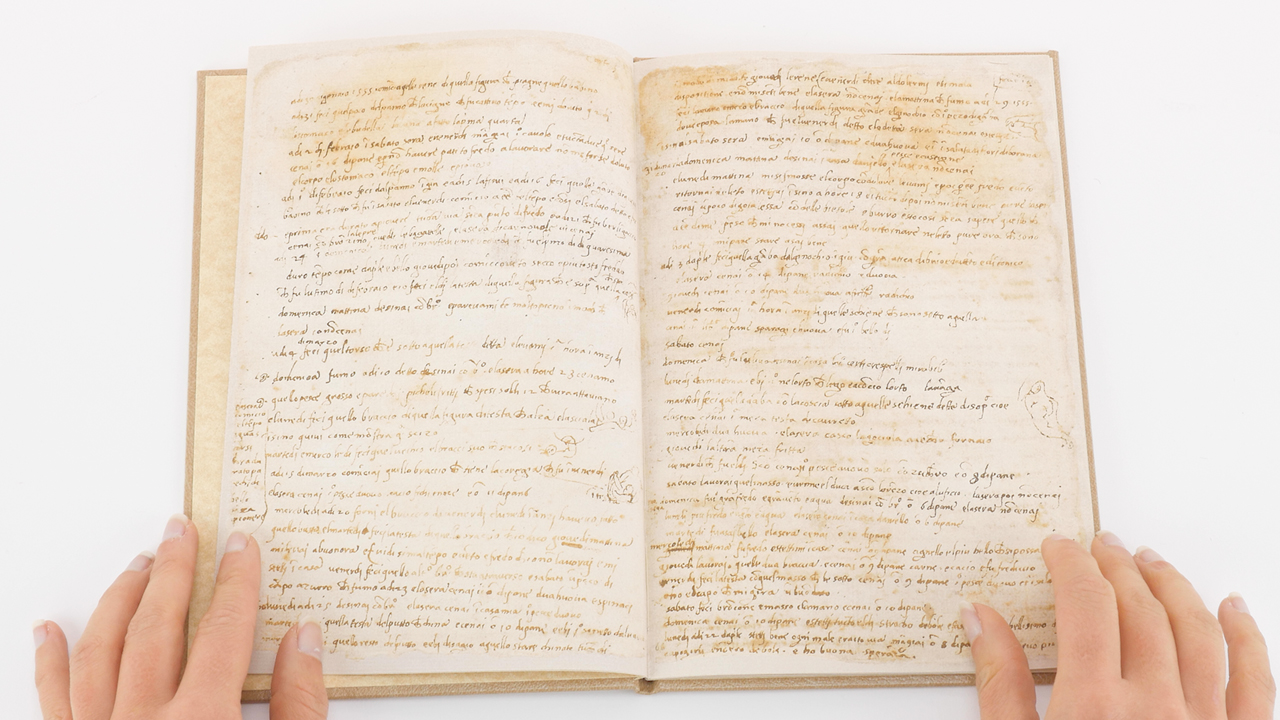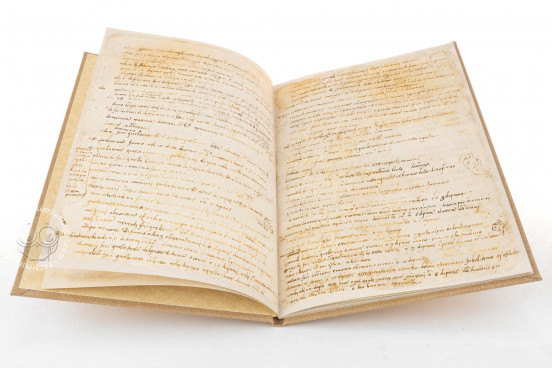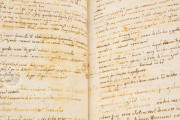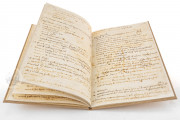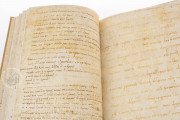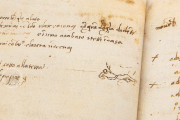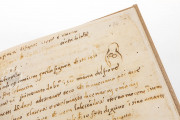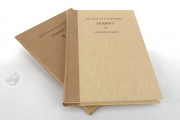Pontormo's Diary, written in Florence between January 1554 and the middle of October 1556, documents various elements of Jacopo da Pontormo's daily life. The Mannerist painter included detailed accounts of his diet, general sense of wellness, and social activity, shedding light on his lifestyle in his final years. Poignantly, the diary reflects the artist's feelings of loneliness and melancholy. Pontormo also sketched marginal illustrations of human figures, which may provide insight into his final commission: frescoes in the choir of the basilica of San Lorenzo, which have since been destroyed.
The sheets were subsequently bound in a trinion and a quinion and included in an extensive collection of modern-age manuscripts currently preserved in the Florence National Library.
A Diary in Vernacular Italian
In the last three years of his life, from 1554 until 1556, Italian Mannerist painter Jacopo Carucci, also known as Pontormo, recorded his feelings, daily habits, and work routine on loose sheets that later became known as Pontormo's Diary.
The diary of Jacopo da Pontormo, written in Vernacular Italian, currently features sixteen sheets penned in cancelleresca corsiva script, as well as forty drawings of body portions, which the artist used to record the state of his work on the frescoes in Florence's St. Lawrence Church.
The Inner Struggles of a Renaissance Painter
When Pontormo started writing his diary, in the spring of 1554, he was painting frescoes in the lower part of the choir of the Church of St. Lawrence in Florence, a project he had been working on for at least seven years. The undertaking posed serious threats to his already frail health, given that he was almost sixty years old. Pontormo's occupation forced him to withstand harmful positions and a dangerous humidity level, perched on high scaffolds he often risked falling from.
The risks inherent in his activity and the need to complete the frescoes urged him to write down his habits, diet, and feelings with obsessive care. By recording his daily condition, Pontormo hoped to find a consistent way to keep in good health and thus accomplish the decoration of the choir in Florence's St. Lawrence Church.
Along with noting his feelings and habits, Pontormo also drafted forty small drawings and connected them to explanatory comments with a stroke of his pen. All but one drawing are on the right margin of the diary, and they record the portion of the fresco the artist worked on during a particular day: a head, an arm, a thigh, a leg, a torso. Pontormo sketched the drawings not to develop his art further, but to remember what he had painted during the day.
The artist presumably wrote his notes not in the form of a book, but on loose pages, which were bound at a later, unknown stage. The diary's last date is October 23, 1556, about two months before Pontormo passed away, and its current structure, made up of a trinion (63-68) and a quinion (69-78), dates back at least to the early decades of the seventeenth century. The volume was divided into two parts not based on its content, but to ensure better preservation: blank folios were also added to the beginning and end to shield it from aging and humidity.
A Popular Script for a Secret Diary
The text is penned in cancelleresca corsiva—also known as italic—a script that was widely used in records offices and scholarly and religious communities from the beginning of the fifteenth century onwards. Common in Renaissance tradition, Pontormo adopted a varied and complex abbreviation system.
According to Roberto Fedi, who analyzed Pontormo's writings, the artist was fairly educated (he had studied Latin as a young boy and his letters show good rhetorical abilities) and had probably been taught to use cancelleresca corsiva for everyday writing. The lack of layout elements suggests that Pontormo assigned his diary a private, almost secret function—he wrote only for himself.
Part of an Extensive Manuscript Collection
According to art historian Arduino Colasanti, Pontormo's diary passed on to Andrea d'Antonio di Bartolomeo, known as Chiazzella, and ended up in the collection of Carlo di Tommaso Strozzi (1587-1670), where it remained until the late eighteenth century. In 1786 the Strozzi collection, including Pontormo's diary, was divided up among various public libraries in Florence.
Since 1864, Pontormo's Diary is preserved in the National Central Library in Florence not as an independent manuscript, but as part of MS Magl. VIII 1490, a large codex collecting 32 modern-age volumes on a range of subjects.
We have 1 facsimile edition of the manuscript "Pontormo's Diary": Diario di Jacopo da Pontormo facsimile edition, published by Salerno Editrice, 1996
Request Info / Price
